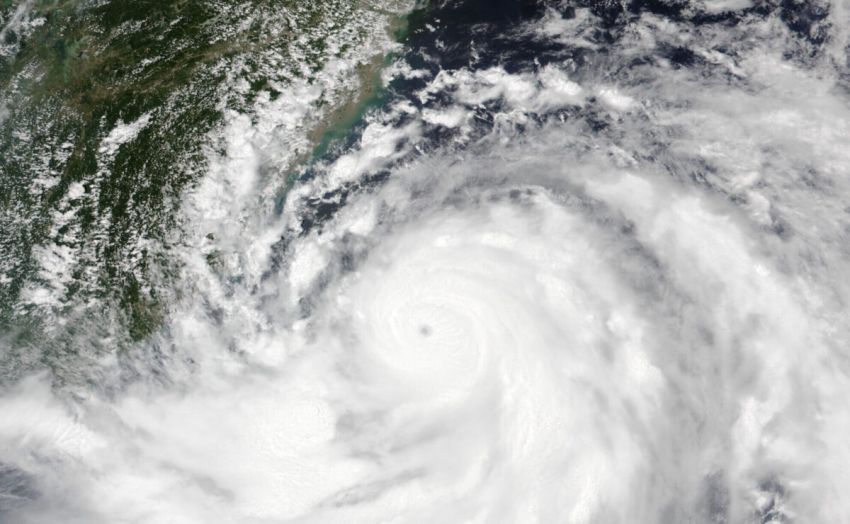
Greenpeace International and Stamp Out Poverty released a report on November 18, which argues that progressively taxing the world’s seven biggest oil and gas companies — ExxonMobil, Shell, TotalEnergies, BP, Chevron, Equinor and Eni — would raise significant funds to pay for the damage caused by climate disasters.
Paying the Price estimates that a modest “climate damages tax” of US$5 per tonne on carbon dioxide (or equivalent) would generate about $15 billion dollars, based on last year’s figures.
If the tax was progressively scaled up each year, it would raise a cumulative $231.86 billion dollars over six years, according to the report.
Clearly more is needed than just funds for climate disasters that have already happened, and this should not detract from the urgently needed funds for climate mitigation and adaptation. However, climate impacts are already being felt and are affecting the world’s poorest people, who are the least responsible for the crisis.
Funding for climate-related loss and damage is “fundamentally an issue of climate justice”, the report said.
“While oil and gas giants keep raking in grotesque levels of profit from exploiting resources, the damages resulting from the industry’s operations are disproportionately borne by people who did not cause the crisis,” Stamp Out Poverty director David Hillman said.
“A climate damages tax — along with other levies on fossil fuels and high-emitting sectors — will make polluters pay for the cost of climate impacts, as well as supporting workers and affected communities in the transition to clean energy, jobs, and transport.”
The report focused on the damages from six of this year’s most prominent climate disasters: heatwaves in India; floods in Brazil and Kenya; Hurricane Beryl in the United States, Caribbean and Mexico; Hurricane Helene in the US; and Typhoon Carina (Gaemi) in the Philippines, China, Taiwan and North Korea.
The report’s release followed two weeks of global protests, where climate disaster survivors and Greenpeace activists delivered the wreckage of personal belongings to the offices of fossil fuel giants like TotalEnergies, Eni, Equinor and OMV. These included survivors of Typhoon Carina in the Philippines and the Rio Grande do Sul floods in Brazil.
The disasters caused thousands of deaths, displaced many more and cost an estimated US$64.6 billion.
The clean-up, rebuilding efforts and damages pose a significant economic burden for poor countries, especially as these types of events are predicted to become more severe and frequent.
But who should pay for these disasters?
The Fair Shares in Loss and Damage Finance report, released by Germanwatch and Oxfam Germany in September, calculated what a “fair share” model of loss and damage financing could like, based on countries’ capabilities, historical responsibility for causing climate change and development needs.
The report found that the 24 Annex II countries — required to provide financial and technical support under the United Nations Framework Convention on Climate Change — are responsible for providing at least 88% of loss and damage funding.
Under the fair share model, the US alone would need to provide about half of the funding for global climate loss and damage every year.
Australia would be responsible for providing 3.4%, or about US$9.4 billion. This would be well within the Australian government’s capabilities, given that it is set to spend A$368 billion on buying or building eight nuclear submarines as part of the AUKUS military alliance and will forego A$243 billion over the next decade due to the Stage 3 tax cuts.
This model could also be applied to determining countries’ responsibilities for climate mitigation and adaptation, and their obligation to fund it.
Instead, the world’s richest countries have dragged their feet on providing climate finance, despite it being a key demand from climate-vulnerable countries at COP29 in Baku, Azerbaijan.
Countries have only pledged about US$702 million in total to the new loss and damage fund since it was established at COP28 last year, falling way short of the estimated US$400 billion needed yearly. Many of the wealthiest countries, the most responsible for causing climate change, have made paltry pledges or failed to make any at all.
Only US$10 million has actually been delivered to the fund, which is based on voluntary contributions.
Furthermore, the unprecedented debt crises facing countries of the Global South — often legacies of the colonial International Monetary Fund and World Bank loans — hamstring climate action.
In “low-income” countries, debt repayments accounted for 39% of government spending last year.
About 42% of the world’s population — and 90% of the world’s poorest people — live in countries with the highest debt burden. A huge chunk of government spending goes toward just repaying interest on loans — about 3.3 billion people live in countries that spend more on interest than education or healthcare.
Wiping countries’ external debt, as advocated by the Committee for the Abolition of Illegitimate Debt, would rectify this hugely unjust situation, as well as enable funds to be directed to climate mitigation, adaptation and damage.